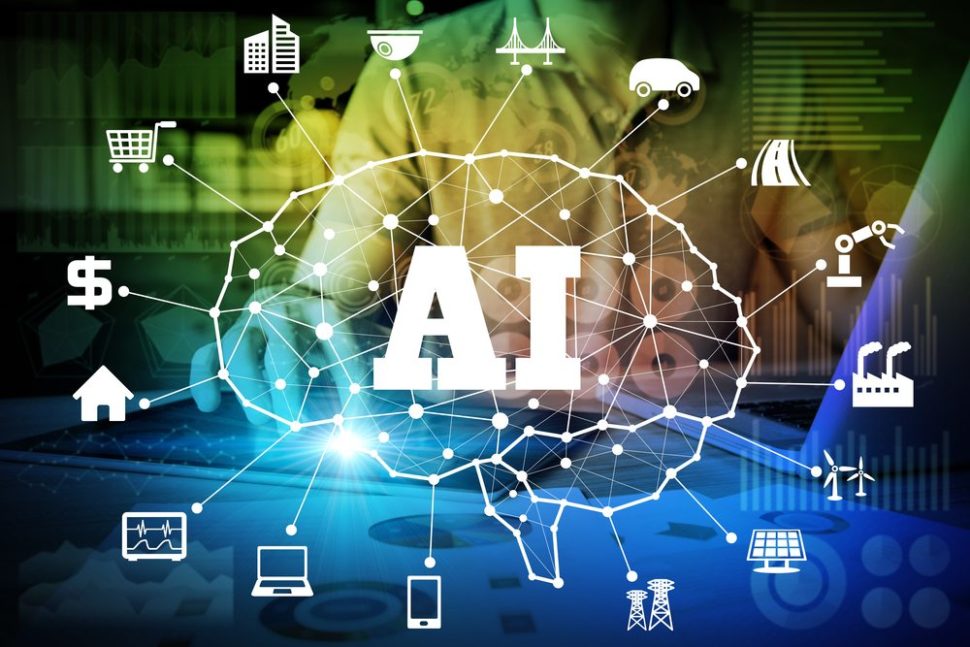Machine Learning algorithms enable companies to cut costs, increase their productivity and improve their overall performance. As more and more businesses take advantage of ML, the entire economy gets a boost.
From the customer’s side of things, AI and Machine Learning apps are increasingly present in modern daily life, from new facial and improving voice recognition apps to chatbots and robo-advisors we’ve become an AI society–perhaps without realizing it.
From the business perspective, multiple AI-related innovations are disrupting conventional models across all industries. AI will accompany humans rather than replace them, and help them manage a growing technological complexity.
#PwC says #AI will add $15.7 trillion USD to #world #GDP by #2030Click To TweetCompanies wanting to thrive in the future have had to rethink their strategy by integrating AI as (super) human resources and a capital that redefines the company, its operation model, and its offer.
Just within the banking sector, new startups like Plum and Digit primarily help millennials save by making automated microdeposits into savings and investments.
However, it’s not just a niche that AI serves in banking.
ERICA gives Bank of America customers a key and constant updates on finances using phone, text, or email. Predictive analytics and cognitive messaging enable ERICA to remind customers about making payments, monitoring balances and managing debt.
AI-Driven Business
The principle of machine learning is potentially applicable to any process. As a data collection and predictive analytics tool, AI can be useful regardless of the size of the company or the industry segment.
There are several examples of how machine learning systems could boost companies’ productivity and performance.
Self-learning algorithms offer new prospects of growth and can be applied to areas such as e-commerce, customer relations, and cybersecurity.
Customer Experience:
Chatbots will not necessarily replace human consultants, but they offer many advantages in terms of customer relations: saving time and money and allowing continuous customer service improvement thanks to the ability of the AI to learn from past interactions.
The more the chatbot interacts, the better it gets. A more satisfied customer is a more stable stream of revenue. It’s as simple as that.
e-Commerce:
The integration of AI tools makes it possible for businesses to better orient customers, get quality traffic and simultaneously monitor the security of a website or database.
Machine learning algorithms can improve conversion rates if used, for example, to make personalized recommendations based on each customer’s profile and statistical data by offering the right product to the right customer.
Cybersecurity:
AI-based security mechanism could offset potential losses related to cybercrime.
Thanks to their capacity to analyze massive amounts of data in a limited time, machine learning algorithms are able to identify cyber threats in real time to help security staff react or take proactive measures.
Machine Learning as an Economic Growth Lever
$15.7 trillion USD: that’s the total gain that AI would add to the world economy by 2030, according to PricewaterhouseCoopers.
PwC’s research, released last July, forecasts that there’d be 14% increase in world GDP thanks to AI and its development. This growth would be achieved by increasing consumer demands as well as the productivity and performance gains enabled by AI.
The countries with the greatest economic benefits will be China and North America, with GDP gains at 26% and 14.5% respectively by 2030.
AI economic benefits will also be substantial in Europe (9% of GDP) and Asia (12%). Given that adoption rates of AI technologies are relatively low, developing countries in Africa and Latin America will likely only see a maximum of 6% of AI-driven growth.
In its analysis, “Why AI is the Future of Growth?”, Accenture says AI has the potential to help developed countries double their GDP growth rates by 2035.
Using data from Oxford Economics, Accenture analyzed 12 developed economies and found that labor and capital, as traditional production drivers, are no longer sufficient to drive growth.
As we’ve shown, AI tech is shaping up to be the next major economic growth factor–much more so than past tech advances (like railroads or even electricity) that also greatly enhanced the total productivity of industrialized nations.
In a sense, AI is two in one, a labor-capital hybrid, both a worker with superhuman abilities and an unconventional capital asset. The potential combined effect is what is so well-reflected in the figures above.



















Comments (0)
Most Recent